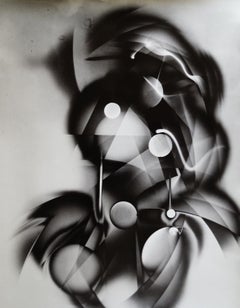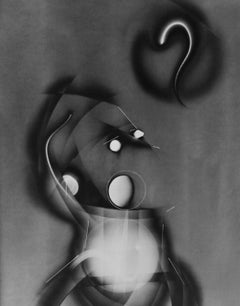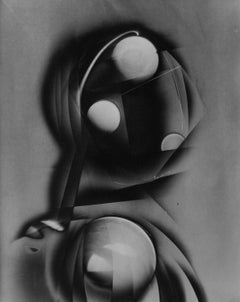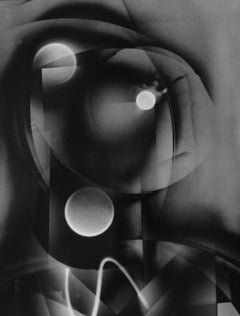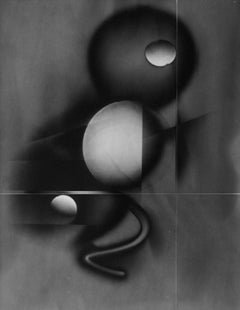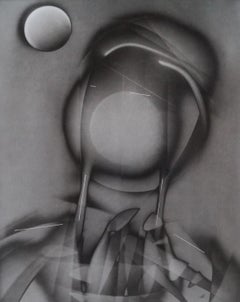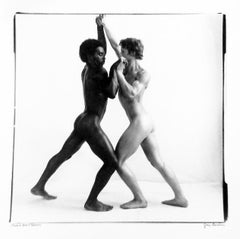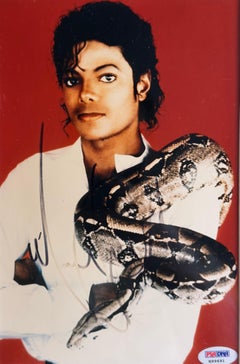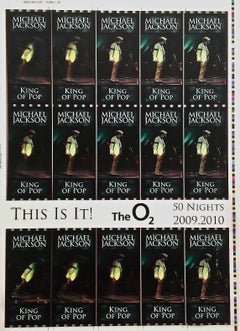Michael Jackson Art
to
6
Overall Width
to
Overall Height
to
6
6
6
3
3
3
2
1
1
1
6
6
9,102
2,807
2,504
1,351
6
Artist: Michael Jackson
Mrs. S
By Michael Jackson
Located in Sante Fe, NM
This is a one of a kind luminogram
Category
2010s Michael Jackson Art
Materials
Silver Gelatin
Jake
By Michael Jackson
Located in Sante Fe, NM
This is a one of a kind luminogram
Category
2010s Michael Jackson Art
Materials
Silver Gelatin
M
By Michael Jackson
Located in Sante Fe, NM
This is a one of a kind luminogram
Category
2010s Michael Jackson Art
Materials
Silver Gelatin
$4,000
Felicity
By Michael Jackson
Located in Sante Fe, NM
This is a one of a kind luminogram
Category
2010s Michael Jackson Art
Materials
Silver Gelatin
Yellow, November
By Michael Jackson
Located in Sante Fe, NM
This is a one of a kind luminogram
Category
2010s Michael Jackson Art
Materials
Silver Gelatin
Flora
By Michael Jackson
Located in Sante Fe, NM
This is a one of a kind luminogram
Category
2010s Michael Jackson Art
Materials
Silver Gelatin
Related Items
Male Nudes, Portrait Photograph in Studio, Thompson and Brown
By George Dureau
Located in New york, NY
A black and white photograph, Thompson and Brown, c. 1980 by George Dureau is a 20" x 16" gelatin silver print, signed and titled recto (front of photo) below the image. Often compar...
Category
1980s Contemporary Michael Jackson Art
Materials
Photographic Paper, Silver Gelatin, Photographic Film
Le Petit Parisien, Paris, France, Iconic Contemporary French Photography
By Willy Ronis
Located in New york, NY
A much sought after photograph Le Petit Parisien, 1952 by French photographer Willy Ronis is a black and white image, a gelatin silver print, measuring 30 x 23,5 cm 12 x 9in. The w...
Category
1950s Contemporary Michael Jackson Art
Materials
Silver Gelatin, Photographic Film, Photographic Paper
Naples, Italy, Cats, Black and White Street Photography 1950s
By Leonard Freed
Located in New york, NY
American Photographer Leonard Freed travelled extensively and enjoyed Italy - a country he returned to often and photographed throughout his long photographic career. Cats, Naples, I...
Category
1950s Contemporary Michael Jackson Art
Materials
Film, Photographic Film, Silver Gelatin
$1,900
H 10 in W 8 in
Jewish Diaspora 1950s, Yeshiva Students New York, Black-and-White Photography
By Leonard Freed
Located in New york, NY
Yeshiva Students, New York City, 1954 by Leonard Freed is a black-and-white photograph of three young Jewish Youth, studying at a yeshiva. This is a gelatin silver lifetime print, 16...
Category
1960s Contemporary Michael Jackson Art
Materials
Photographic Film, Photographic Paper, Silver Gelatin
Harlem Beauty Contest, African American Fashion, Black and White Photograph
By Leonard Freed
Located in New york, NY
Beauty Contest, Harlem, 1963 by Leonard Freed is a 16" x 20" gelatin silver print, signed verso (on back) by the Freed estate. The image appears in Amer...
Category
1960s Contemporary Michael Jackson Art
Materials
Photographic Film, Photographic Paper, Silver Gelatin
Digging for Clams (Slim Aarons Estate Edition)
By Slim Aarons
Located in New York, NY
Mrs Hans Estin watches her children digging for clams at low tide on Black Beach, Massachusetts Bay, circa 1960
Slim Aarons
Digging for Clams on Black Beach
1960
Fiber Print
Estate...
Category
1960s American Modern Michael Jackson Art
Materials
Silver Gelatin
Terry O'Neill 'The Beatles leaving for The United States'
By Terry O'Neill
Located in New York, NY
The Beatles are photographed leaving Heathrow Airport for the US to perform at the Ed Sullivan Show in February of 1964. The group would go on to be regarded as the most influential ...
Category
1960s Modern Michael Jackson Art
Materials
Silver Gelatin
Rome, Italy, Black and White Photography by Leonard Freed
By Leonard Freed
Located in New york, NY
A gelatin silver estate print, 24" x 20" from the Freed archive, Rome, Italy, 2000 by Leonard Freed is a black and white contemporary photograph focused on an unexpected, poetic, and beautiful classical sculpture in the stairwell of a modest Roman dwelling. Leonard Freed discovered Little Italy in...
Category
Early 2000s Contemporary Michael Jackson Art
Materials
Photographic Film, Photographic Paper, Silver Gelatin
New York City, Brooklyn, Cities, Black-and-White Photography, Coney Island Girl
By Roberta Fineberg
Located in New york, NY
An image of a young woman on an amusement park ride shot on film by Roberta Fineberg, the portrait was made in New York in the late 1980s a time of innocence and edginess, tenderness...
Category
1980s Contemporary Michael Jackson Art
Materials
Silver Gelatin, Photographic Film, Photographic Paper
Paris, France, Crazy Horse Saloon Owner, Classic Black and White Photography
By Burt Glinn
Located in New york, NY
A black and white photograph from 1994 that captures Alain Bernardin and chorus girls at The Crazy Horse Saloon in Paris, France. A leading tourist attract...
Category
1990s Contemporary Michael Jackson Art
Materials
Photographic Film, Photographic Paper, Silver Gelatin
Paris, France, Cities, Black-and-White Photography, French Shopkeeper
By Roberta Fineberg
Located in New york, NY
A black-and-white photograph (analog) of a magazine/newspaper shopkeeper who exhibits a unique brand of French quirkiness and expressiveness in Paris of the 1980s. Shot on film, Shopkeeper, 1989 by Roberta Fineberg is a 14” x 11” gelatin silver print in an edition of 5. Signed, dated, and titled on recto (photo front) by the artist. Provenance: RF Archive *** Artist's Bio: As a visual artist, Roberta Fineberg (RF) focuses on the themes of serendipity, inventiveness, and the development of ideas for her photography, video, installations, works on paper, and painting. Drawn to experimentation, she explores diverse mediums and concepts such as the ephemeral (Butterfly Series), stolen moments (documentary photography), play, timelessness, the enduring, and the significance of matter. RF, living in New York City, began her career as an editorial photographer while studying in Paris. In France she contributed both photography and writing to publications, landing a column (photos and text) with The Saturday Review while exhibiting photographs in public spaces. Roberta Fineberg’s freelance photography appeared in Le Monde, Jeune Afrique, Paris Match, L’Officiel Femme, Ms, Weltwoche, Vanguardia, among others with images licensed through stock agencies. Photographs were selected for cover art at W.W. Norton, St. Martin’s Press, Harcourt, Bookspan, Simon & Schuster, etc. Print Regional Design Annual New York (2003) awarded her for book jacket photography for If Wishes Were Horses. In 1997 Macmillan published City Riders: A Story of Riding and Friendship her first book of black-and-white photographs and a story about three teenage girls in the 1990s who rode horses at the now-defunct Claremont Riding Academy and oldest stable in New York City. In 2023, RF created an interactive installation, works on paper on the female body, in a public space. In July 2022, Fineberg’s Double Helix was included in a Sotheby’s auction in New York City and exhibited in the preview show Contemporary Discoveries. Selected exhibitions include Time Gallery New York (2022), Phyllis Harriman Gallery New York studio shows (2020, 2022), CADAF online art...
Category
1980s Contemporary Michael Jackson Art
Materials
Silver Gelatin, Photographic Film, Photographic Paper
New York City, Cities, Black and White Photography, Trinity Church Wall Street
By Leonard Freed
Located in New york, NY
Trinity Church, Wall Street, 1995 by Leonard Freed is a 14" x 11" black and white, gelatin silver, vintage print. The urban landscape photograph captures Freed's interest in New York City architecture, a city he loved, as well as reveals the photographer's masterful techniques in using light...
Category
1990s Contemporary Michael Jackson Art
Materials
Photographic Film, Silver Gelatin, Photographic Paper
Previously Available Items
Original Michael Jackson Autograph, PSA/DNA Certificate
By Michael Jackson
Located in Stockholm, SE
Original Michael Jackson Autograph
certificate: PSA/DNA no H99691 (included)
picture ca 9.25 x 6.29 inches (23.5 x 16)
frame 15.55 x 12 inches (39.5 x 30.5 cm)
Category
20th Century Michael Jackson Art
Materials
Photographic Paper
H 15.56 in W 12.01 in
This Is It! Uncut 2009 Lenticular Concert Ticket Sheet Form 5, 5A Michael Jackson
By Michael Jackson
Located in Fairfield, CT
Artist: Michael Jackson (1958-2009)
Title: This Is It! Uncut 2009 Lenticular Concert Ticket Sheet Form 5,5A Michael Jackson
Year: 2009
Medium: Lenticular Printing on vinyl
Size: 28 x...
Category
Early 2000s Contemporary Michael Jackson Art
Materials
Lenticular
The Western Face of Friend's Mount, 2016
By Michael Jackson
Located in Sante Fe, NM
My aim is to show a world as how a child would respond to it, full of adventure, pirates, crags and storms.
At some point, as we grow up, we lose the ability to let our minds pla...
Category
21st Century and Contemporary Contemporary Michael Jackson Art
Materials
Archival Pigment
Walker's Point
By Michael Jackson
Located in Sante Fe, NM
My aim is to show a world as how a child would respond to it, full of adventure, pirates, crags and storms.
At some point, as we grow up, we lose the ability to let our minds pla...
Category
21st Century and Contemporary Contemporary Michael Jackson Art
Materials
Archival Pigment
Michael Jackson art for sale on 1stDibs.
Find a wide variety of authentic Michael Jackson art available for sale on 1stDibs. If you’re browsing the collection of art to introduce a pop of color in a neutral corner of your living room or bedroom, you can find work that includes elements of blue and other colors. You can also browse by medium to find art by Michael Jackson in silver gelatin print, lenticular, paper and more. Much of the original work by this artist or collective was created during the 21st century and contemporary and is mostly associated with the contemporary style. Not every interior allows for large Michael Jackson art, so small editions measuring 13 inches across are available. Customers who are interested in this artist might also find the work of Laura Jordan, Michael Putland, and Jayson Lilley. Michael Jackson art prices can differ depending upon medium, time period and other attributes. On 1stDibs, the price for these items starts at $860 and tops out at $4,000, while the average work can sell for $3,613.
